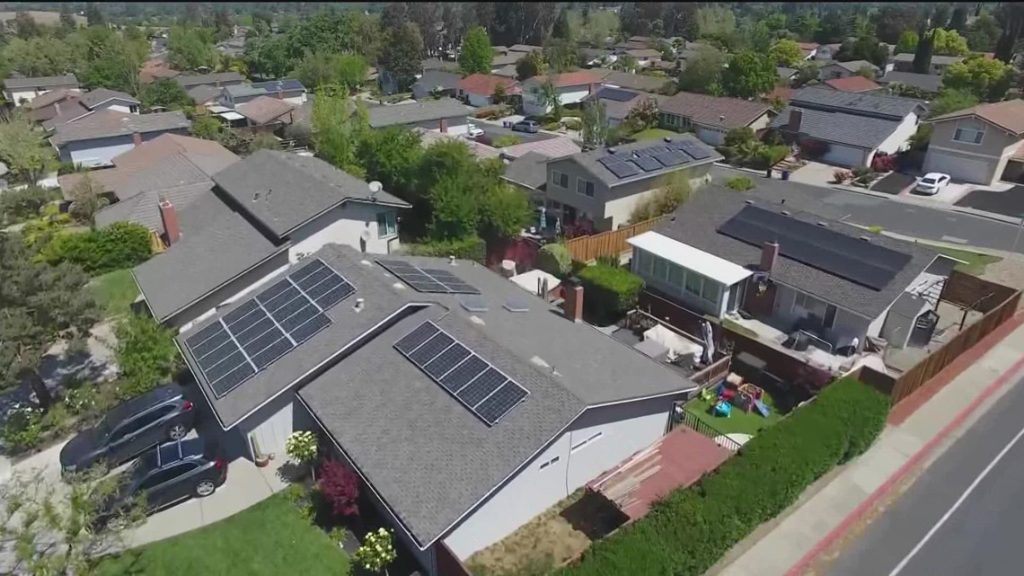
The California Public Utilities Commission has released an updated proposal for regulating rooftop solar installations. The new proposal removed a controversial new fee, but also reduces the amount that utilities would pay homeowners for supplying power to the grid. This revised proposal comes after the CPUC faced considerable backlash from solar advocates over its earlier plan, which was seen as counterproductive to the state’s efforts to combat climate change.
The CPUC’s biggest obstacle is getting legislation for overhauling California’s residential solar programs to pass. The CPUC’s new challenge is to encourage more rooftop solar production while not disproportionately burdening low-income residents with higher energy bills.
The state of California has set a target of 90% zero-carbon energy by 2035, and 100% by 2045. Ramping up solar power is viewed as a critical way to cut greenhouse gases.
Despite some changes, the revised proposal raised several concerns among solar supporters. Power companies believe that it is not difficult to tell that Gov. Newsom had a hand in the re-work. Newsom, who appoints CPUC commissioners and twice weighed in on the issue, suggested that the original proposal be revisited.
“The changes to this bill are drastic,” said Kathy Fairbanks, a spokesperson for Affordable Clean Energy For All. The organization includes 120 organizations like Pacific Gas & Electric and Southern California Edison. “If it wasn’t influenced—why were these changes made?”
The CPUC will hear oral arguments at a public meeting next Wednesday. If approved, the new rules would take effect on April 1st.
The rewritten rules would:
- Remove a proposed $8 monthly fixed charge, a so-called solar tax, on new residential systems.
- Reduce utilities’ payments to homeowners for excess power they sell by as much as 75 percent compared to current rates. The change would not apply to residents with existing solar systems.
- Fund $900 million in new incentive payments to help purchase rooftop solar systems, with $630 million set aside for low-income households.
- Encourage the installation of solar panels plus battery storage.
- Set lower rates in an attempt to shift consumers’ use of power to the times of day that improve grid reliability.
The California Solar & Storage Association (CSSSA) has announced that the California Public Utilities Commission’s (CPUC) proposed update to net metering rules would result in a 75% reduction in credits paid to new solar customers for power their rooftop systems provide to the grid. This would effectively reduce the rate paid to new customers from about 30 cents per kilowatt-hour (kWh) to 5 cents/kWh.
According to CSSSA Executive Director Bernadette Del Chiaro, “The proposed rules would really hurt [the solar industry]. The newest proposal needs more work or it will replace the solar tax with a steep solar decline.” In response to the proposed updates, the solar industry is pleased that the monthly fee was removed. They said the surcharge would have discouraged installation of solar panels and damage the growing clean-energy sector.
The state’s utilities are disappointed that the Commission’s amended proposal does not do more to address the issue of “cost shift,” referring to solar customers not paying their fair share of the costs associated with delivering residential power and the impact on the function of the electric grid. According to the CPUC’s Public Advocate’s Office, more than $3 billion was passed on to non-solar customers in 2021. Fairbanks said the new proposal “went backward” in addressing that gap, and that rooftop solar customers “ have been getting a sweet deal for decades.”
The new proposal would change the state’s Net Metering policy, which was implemented in 1995 and provides incentives for homeowners to install solar panels. The proposal cites the evolution of clean energy and its impact on the electric grid, saying that the current policy is no longer aligned with a grid that is bloated with solar energy during the day and overburdened with demand for power when the sun goes down.

